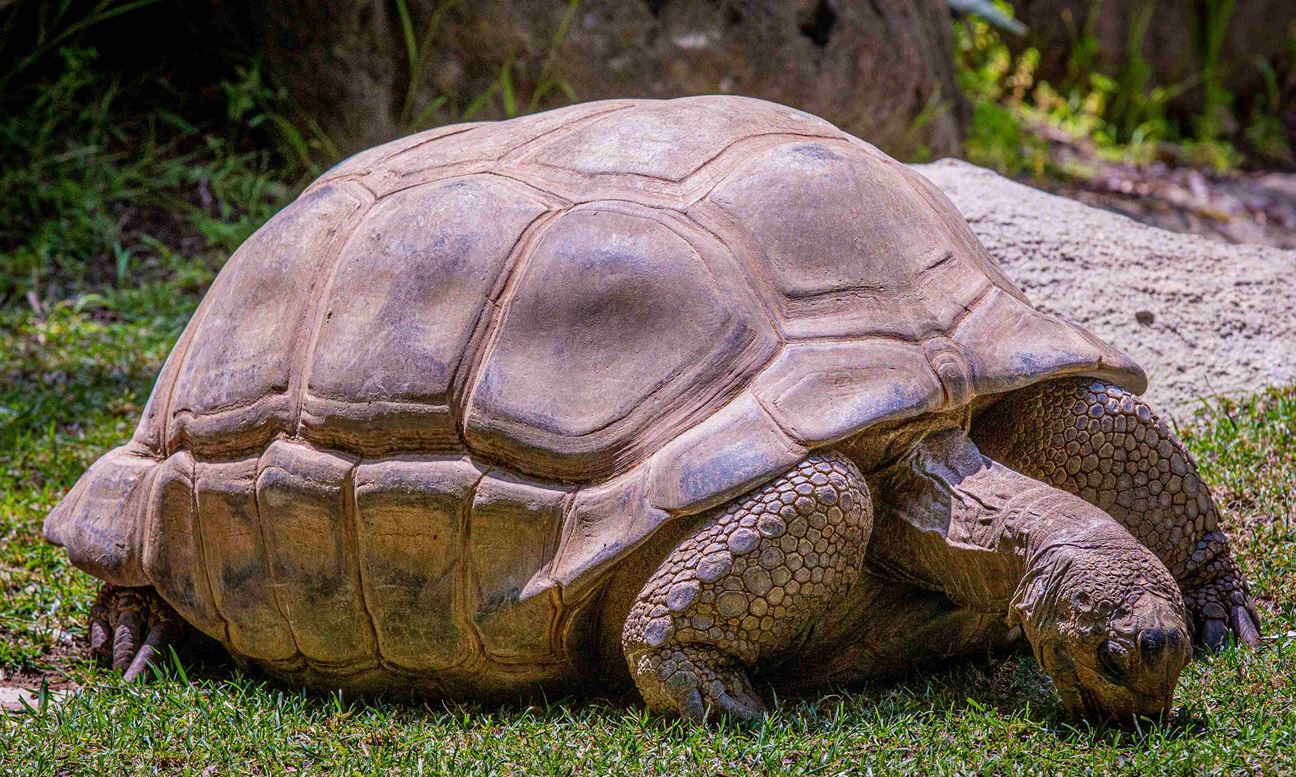One of the most interesting cases of Taxonomy, the difference between Turtles and Tortoise has intrigued many. Here's how the two are different!

Anatomical Features, Like Hind-Limbs, Are a Definite Identification Factor (Image courtesy - SYMPL images-shutterstock)
Tortoise and turtles both are reptiles. They are from the order of Testudines or Chelonia (old use) which are reptiles that have bodies encased in hard and bony shells. The upper part of the shell called “carapace” and the lower part called “plastron”, both together, shield a rather soft body of these reptiles. While they have openings in the shell for their limbs and head to come out and withdraw, they can never be completely detached from their shells.
Further, it should be noted that ‘turtle’ is a universal term for all species of the Testudines group, which means all tortoise are intact turtles!
 Fun Fact: Tortoises Can Live Up to 150 Years of Age, While Turtles Live About 70 Years (Image Courtesy - Ron Harr-Shutterstock)
Fun Fact: Tortoises Can Live Up to 150 Years of Age, While Turtles Live About 70 Years (Image Courtesy - Ron Harr-Shutterstock)
How does one tell the difference between the two? Read on.
Habitat:
Probably the most important distinction between the two is that tortoises are, exclusively, land creatures. They dwell only on land—be it a desert or a wet tropical forest. Turtles can be aquatic, semi-aquatic or mostly terrestrial. Barring a few exceptions (box turtles, wood turtles), most turtles are aquatic and come to land only to lay their eggs.
Shape of Shell:
Tortoises are generally much bigger than turtles. They have large, heavy dome-shaped shells with bumps on the shell top in certain species. Turtles have flat streamlined shells that are comparatively lightweight.
Limbs:
Another major difference between the two is that tortoises, being terrestrial creatures, have feet adapted for walking—flat feet that help them walk many landscapes (slow, but definitely steady!). They have small but sturdy feet and bent legs.
Turtles being aquatic have some degree of webbed feet depending on if they are purely aquatic or dwell on both- land and in water. They have long claws adapted to swimming.
Lifespan:
Tortoise live long lives! The average life span of a tortoise is anywhere between 80 to 150 years. The longest living tortoise is 326 years old! Turtles, on the other hand, have a very short life span in comparison - 20 to 40 years. The longest living turtle known to us lived for 86 years.
Diet:
Tortoises are mainly herbivores. Turtles are omnivores - they eat fruits, leafy veggies and meat (larvae, small fish, and insects).
Birth:
And last but not least, a tortoise lays eggs anywhere between 1 to 200 in number depending on the species. The mother tortoise provides protection to the young hatchlings for about 80 days after they hatch. Turtles lay their eggs near the shore and swim off immediately. These eggs hatch and grow up without their mother’s protection - they stay in their nest for 90 - 120 days on their own before swimming off themselves.
With this list of differences, I now hope you can distinguish these fascinating creatures a little better!